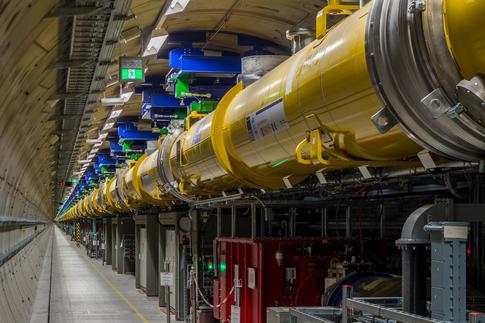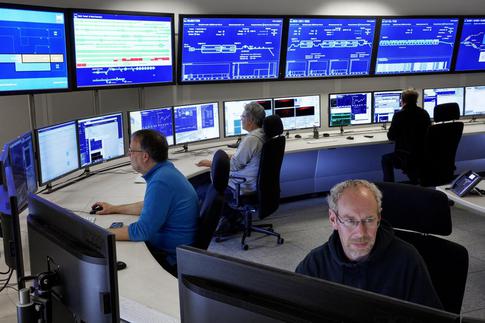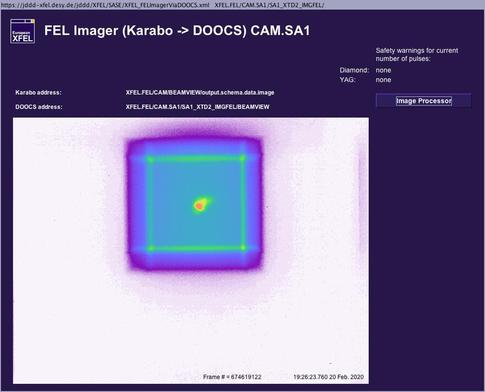XFEL: European XFEL reaches world record photon energies
European XFEL reaches world record photon energies

The accelerator section of the XFEL with its yellow superconducting accelerator modules is two kilometres long. Copyright DESY / Dirk Nölle
With a photon energy of 25 kilo-electronvolts (keV), corresponding to a laser wavelength of 0.5 Angstroms (0.05 nanometres), DESY´s operations team of the European XFEL accelerator set a new wavelength record for laser light. But that was not all - by changing the setting of the undulator SASE1, one of the light generation devices of European XFEL, to 30 keV the accelerator team was able to push the limit even further, observing clear indications of free-electron laser radiation on a scintillating screen.

The control room at DESY Bahrenfeld from which the accelerator is controlled. Copyright DESY / Heiner Müller-Elsner
“It is exciting to see that the European XFEL is capable of achieving these photon energies” says Sakura Pascarelli, scientific director at European XFEL. “Since very hard X-rays allow for larger penetration depths, this will enable the investigation of materials in complex, highly absorbing, environments. These parameters will be crucial for studying, for example, dynamic processes in material science and engineering, the structure and dynamics of liquids, melts and solutions, and the investigation of matter at very high pressure in diamond anvil cells.”

The FEL beam on an X-ray sensitive screen.
Given the high electron energies, scientists immediately tested the photon energy boundaries of the facility. By setting the SASE1 undulator gaps accordingly, lasing at the world record energy of 25 keV could be observed with an energy measured to be around 100 μJ per X-ray pulse. A first user experiment with the accelerator operating at 16.5 GeV and at photon energy of 24 keV has been planned at the SASE2 undulator for 2020. The recently reached results at SASE1 are a crucial step towards realizing these experiments once the facility is back to full performance from the safe state it is currently in due to the SARS-CoV-2 pandemic.
